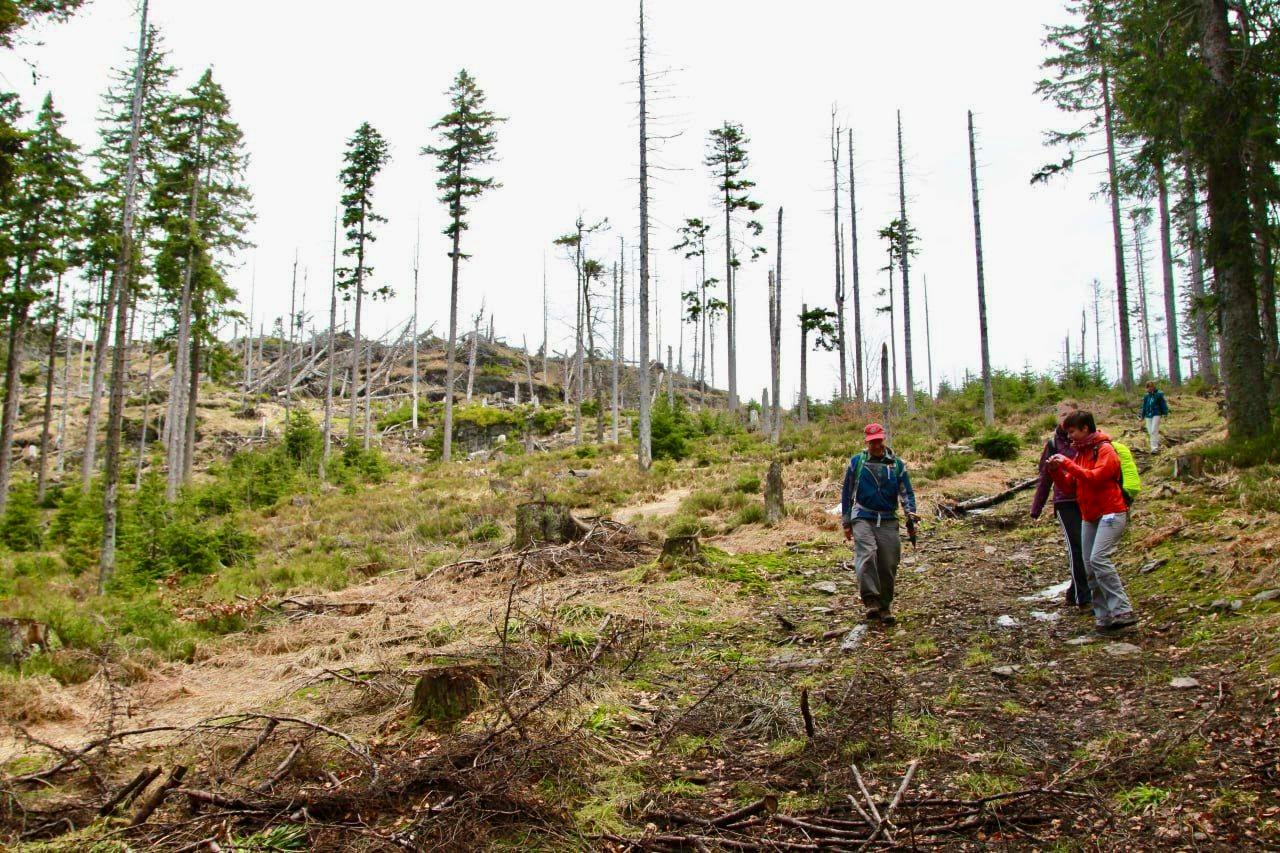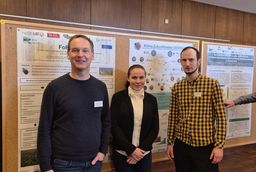Public awareness
DIVERSA SP8 - Through science communication focused on knowledge transfer about climate-related change in our forests awareness and understanding shall be generated to ensure public perception. In line with this, knowledge, misconceptions and environmental attitudes are collected in order to guarantee targeted knowledge transfer.
Within the context of science communication, sustainable knowledge transfer is an important component in generating pubic understanding of climate change in forests.

Natural disturbances caused by climate change are increasing and affecting more and more forests and their management [*] (Patacca, M., Lindner, M., Lucas‐Borja, M. E., Cordonnier, T., Fidej, G., Gardiner, B., ... & Schelhaas, M. J. (2023). Significant increase in natural disturbance impacts on European forests since 1950. Global change biology, 29(5), 1359-1376. ) [*] (Fischer, A. P., Shah, M. A. R., Segnon, A. C., Matavel, C., Antwi-Agyei, P., Shang, Y., ... & Team, T. G. A. M. (2024). Human adaptation to climate change in the context of forests: A systematic review. Climate Risk Management, 43, 100573. ). The threat to forests and the connection with climate change are already known to forest visitors [*] (Ungelenk, R., & Hagge, J. (2023). Wahrnehmung und Bewertung trockenheitsgestörter Buchenwälder - Ergebnisse einer Bevölkerungsbefragung und einer Besucherbefragung im Nationalpark Hainich. Natur und Landschaft, 98(4), 195-202. ) [*] (Garms, M., Leiz, M., & Mayer, M. (2024). Perception of climate change-related forest dieback in mountain forests among the local population. European Journal of Forest Research, 143(2), 509-530. ). At the same time, their own knowledge of forests and climate change is mostly rated as average [4]. However, climate change is one of the main drivers of global biodiversity loss, which negatively impacts the function of different ecosystems and nature´s contribution to humans [*] (Isbell, F., Balvanera, P., Mori, A. S., He, J. S., Bullock, J. M., Regmi, G. R., ... & Palmer, M. S. (2023). Expert perspectives on global biodiversity loss and its drivers and impacts on people. Frontiers in Ecology and the Environment, 21(2), 94-103. ). Meanwhile perceived biodiversity in forests can have a positive influence on human well-being [*] (Farris, S., Dempsey, N., McEwan, K., Hoyle, H., & Cameron, R. (2024). Does increasing biodiversity in an urban woodland setting promote positive emotional responses in humans? A stress recovery experiment using 360-degree videos of an urban woodland. Plos one, 19(2), e0297179. ) [*] (Rozario, K., Oh, R. R. Y., Marselle, M., Schröger, E., Gillerot, L., Ponette, Q., ... & Bonn, A. (2024). The more the merrier? Perceived forest biodiversity promotes short‐term mental health and well‐being—A multicentre study. People and Nature, 6(1), 180-201. ) and natural disturbances such as fire, wind and bark beetles can have a primarily positive effect on forest biodiversity [*] (Thom, D., & Seidl, R. (2016). Natural disturbance impacts on ecosystem services and biodiversity in temperate and boreal forests. Biological Reviews, 91(3), 760-781. ). Nevertheless, the highest levels of well-being were found in forests with relatively few dead trees caused by bark beetles [*] (Kortmann, M., Angelstam, P., Mayer, M., Leibl, F., Reichert, J., Thorn, C., & Thorn, S. (2022). Disturbance severity and human–nature relationships: A new approach to analyze people’s well-being along a bark beetle infestation gradient. Forests, 13(11), 1954. ). Likewise, forest visitors’ positive assessment of the appearance of beech forests decreases with increasing disturbance [3]. Therefore, it is important to improve the understanding of the impact of changing ecosystems on the public and to transfer important scientific knowledge. The fact, that natural disturbances and biodiversity are not automatically perceived as compatible by humans [9], that individual environmental attitudes influence the acceptance of scientific knowledge [*] (Thorn, C., & Bogner, F. X. (2018). How environmental values predict acquisition of different cognitive knowledge types with regard to forest conservation. Sustainability, 10(7), 2188. ) and that demographic variables, education and self-reported knowledge affect the preference for different management strategies after natural disturbance [*] (Thorn, S., Leverkus, A. B., Thorn, C. J., & Beudert, B. (2019). Education and knowledge determine preference for bark beetle control measures in El Salvador. Journal of Environmental Management, 232, 138-144. ), additionally clarify the importance of public involvement for the actual implementation and acceptance of future management and strategies in the forest ecosystem.
Therefore, subproject 8 aims to capture the social and ecological dimensions of climate change in forests. In addition, the public pre-knowledge about natural disturbances caused by climate change in forests will be identifed. These findings should help to identify possible misunderstandings and knowledge-gaps between science, practice and the public, to develop suitable methods for raising awareness and impact-oriented science communication.
Contact person

Blog
All
1.5 – one scientist, five questions with Prof. Dr. Andreas Schuldt
Head of the Department of Forest Nature Conservation at Georg August University of Göttingen and sub-project lead at the Climate Future Lab DIVERSA
7 min. Reading time
Kick-off event of the Climate Future Lab DIVERSA
At the kick-off in Göttingen, around 30 participants of the Climate Future Lab DIVERSA laid the foundation for six years of interdisciplinary research
3 min. Reading time
Conference on carbon sequestration in forests
Climate Future Labs DIVERSA and FoResLab introduce themselves
2 min. Reading time
